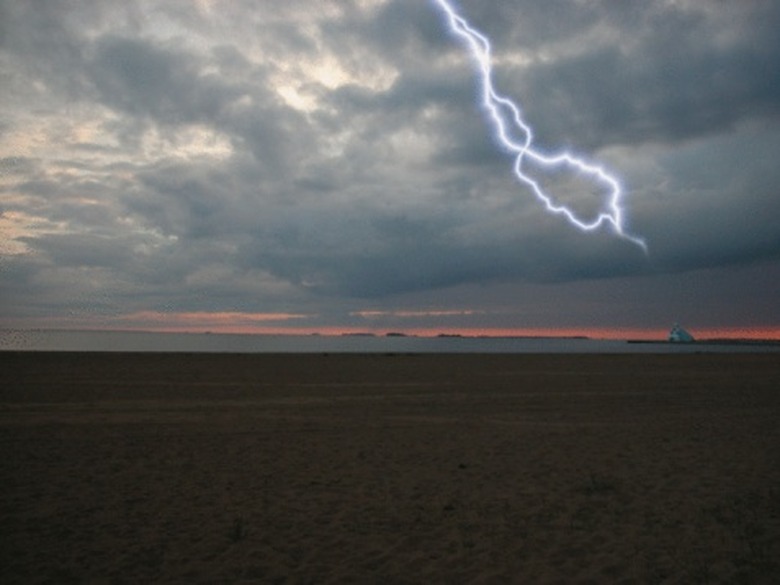How To Know If Your Tree Was Struck By Lightning
The taller the tree is, the more likely it is to be struck by lightning. According to Texas A&M University, it's estimated that more than 25 million lightning strikes occur in the United States each year, some of them packing 100 million volts and temperatures of more than 50,000 degrees Fahrenheit. That's a lot for a tree to handle, and it's no wonder that many lightning-struck trees die. If you're unsure if your tree's been hit by lightning, there are a few symptoms that will clue you in.
Step 1
Look for evidence of an explosion on the trunk of the tree. An explosion triggered by a lightning strike happens in a millisecond. If you see holes in the tree as if it's been shot, or bark and charred wood on the ground on both sides of the tree, the lightning has gone through the center of the trunk and the tree will likely die.
Step 2
Look for broken, burned branches. These occur from a strike in the canopy, and they're different from wind damage, which simply snaps the branch with no associated heat. The main difference between the two is charred bark and burned leaves.
Step 3
Watch for sudden wilting in a tree you suspect is lightning-struck. If the lightning passes through the tree from the top down, it travels through the trunk and into the roots before dissipating in the earth, leaving no evidence of burns on the trunk or branches. Suddenly wilting leaves and twigs lose color and flexibility. They shrink and turn brittle, then drop in a matter of days.
Step 4
Look for a full split down the center of the tree. Naturally, a tree in this condition will not survive, but it's a clear sign that it's been hit by lightning.
Tip
Wait a year if your tree has been struck on only one side. It may recover and develop an interesting scar, giving you a good story to tell.
Warning
If you live in a high-strike area, plant trees that are high in oil content, like beech and birch. Oil conducts electricity poorly, meaning that lightning-struck trees with a higher oil content are more likely to survive than their counterparts. Trees with a lot of resin, like spruce, fir and pine, are good conductors of electricity, making them more likely to explode and burn when struck with the high temperatures of lightning.
